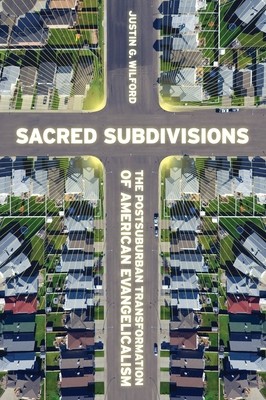
- We will send in 10–14 business days.
- Author: Justin Wilford
- Publisher: New York University Press
- ISBN-10: 081472535X
- ISBN-13: 9780814725351
- Format: 15.2 x 22.9 x 1.8 cm, hardcover
- Language: English
Reviews
Description
In an era where church attendance has reached an all-time
low, recent polling has shown that Americans are becoming
less formally religious and more promiscuous in their religious
commitments. Within both mainline and evangelical
Christianity in America, it is common to hear of secularizing
pressures and increasing competition from nonreligious
sources. Yet there is a kind of religious institution that has
enjoyed great popularity over the past thirty years: the evangelical
megachurch. Evangelical megachurches not only
continue to grow in number, but also in cultural, political,
and economic influence. To appreciate their appeal is to
understand not only how they are innovating, but more crucially,
where their innovation is taking place.
Wilford argues that the success of the megachurch is hinged
upon its use of space: its location on the postsuburban fringe
of large cities, its fragmented, dispersed structure, and its
focus on individualized spaces of intimacy such as small
group meetings in homes, which help to interpret suburban
life as religiously meaningful and create a sense of belonging.
Based on original fieldwork at Rick Warren's Saddleback
Church, one of the largest and most influential megachurches
in America, Sacred Subdivisions explains how evangelical
megachurches thrive by transforming mundane secular
spaces into arenas of religious significance.
- Author: Justin Wilford
- Publisher: New York University Press
- ISBN-10: 081472535X
- ISBN-13: 9780814725351
- Format: 15.2 x 22.9 x 1.8 cm, hardcover
- Language: English English
In an era where church attendance has reached an all-time
low, recent polling has shown that Americans are becoming
less formally religious and more promiscuous in their religious
commitments. Within both mainline and evangelical
Christianity in America, it is common to hear of secularizing
pressures and increasing competition from nonreligious
sources. Yet there is a kind of religious institution that has
enjoyed great popularity over the past thirty years: the evangelical
megachurch. Evangelical megachurches not only
continue to grow in number, but also in cultural, political,
and economic influence. To appreciate their appeal is to
understand not only how they are innovating, but more crucially,
where their innovation is taking place.
Wilford argues that the success of the megachurch is hinged
upon its use of space: its location on the postsuburban fringe
of large cities, its fragmented, dispersed structure, and its
focus on individualized spaces of intimacy such as small
group meetings in homes, which help to interpret suburban
life as religiously meaningful and create a sense of belonging.
Based on original fieldwork at Rick Warren's Saddleback
Church, one of the largest and most influential megachurches
in America, Sacred Subdivisions explains how evangelical
megachurches thrive by transforming mundane secular
spaces into arenas of religious significance.


Reviews